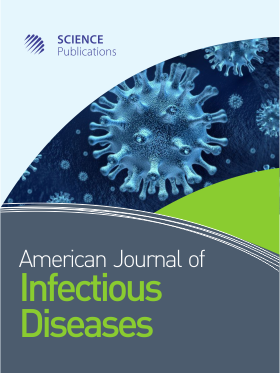Bacterial Resistance in Primary Bloodstream Infections in the COVID-19 Pandemic: What has Changed at a Reference Hospital in Northeastern Brazil?
- 1 Department of Community Health, Faculty of Medicine, Federal University of Ceará, Brazil
- 2 Hospital Infection Control Service, UNIMED Regional Hospital, Pontes Neto Study and Research Center, Brazil
- 3 Laboratory of Neuropharmacology, Department of Physiology and Pharmacology, Faculty of Medicine, Federal University of Ceará, Brazil
- 4 Microbiology Laboratory, Department of Biomedicine, Mauricio de Nassau University, Brazil
Abstract
The increased use of central venous catheters due to the severity of COVID-19 cases and the difficulty in implementing preventive Healthcare-Associated Infection measures contributed to worsening an already challenging scenario of bacterial resistance. Characterizing the impact of these significant health crises on the bacterial resistance profile is necessary to strengthen antimicrobial control protocols in an effort to decrease morbidity. Our main goal was to investigate changes in the bacterial resistance profile in patients with Primary Bloodstream Infections (PBSIs) receiving care at the intensive care unit of a reference hospital in Ceará (northeastern Brazil) during the COVID-19 pandemic. PBSI registries from the hospital infection control service, dating from 2018-2021, and medical records were reviewed. A 5% significance level and a 95% confidence interval were adopted in all inferential procedures. Ninety-four bacterial isolates from blood cultures were studied (29 from the pre-pandemic period and 65 from the pandemic period). Pseudomonas aeruginosa was the most frequently identified bacterium in the pre-pandemic period (20.68%), while Klebsiella pneumoniae was most commonly found during the pandemic (24.61%). The mean antibiotic resistance per bacterium was 4.8 (SD = 3.4) in the pre-pandemic period, increasing to 7 (SD = 4.1) during the pandemic. Penicillins (96%, n = 28) and second-generation cephalosporins (57.1%, n = 28), the most frequent antibiotic classes with resistance in the pre-pandemic era, gave way to carbapenems (115.5%, n = 65) and third-generation cephalosporins (86.1%, n = 65) during the pandemic period. No statistical difference was observed in the number of central venous catheter insertions (p = 0.96). However, more deaths were recorded during the pandemic period (p = 0.014). The antimicrobial resistance profiles increased during the pandemic, including resistance to more selectively used antibacterials.
DOI: https://doi.org/10.3844/ajidsp.2024.24.34

- 3,311 Views
- 1,574 Downloads
- 0 Citations
Download
Keywords
- Bloodstream Infection
- COVID-19
- Healthcare-Associated Infections (HCAIs)
- Bacterial Resistance to Antibiotics
- SARS-CoV-2
